DR Acoustics Antigone 3.0 Power Management System/Virtual Ground System by Mike Wright
 Power conditioners have become a nearly necessary, highly misunderstood piece of audio gear. Most audiophiles feel they have good electricity coming to their rooms and don’t need an AC conditioner. Those are the lucky ones. Others of us aren’t so lucky as we feel the power we send to our rigs needs as much help as they can get. I think that I need more help than most. I have periods where I am just enamored with the sound of my system. Then there are other times when I have either over-tweaked or played around with too many cables, chasing that perfect sound, only to create one type of sonic problem or another. Whether you’re enjoying your sound or hunting down system gremlins, the hope is that your conditioner is sending good enough power to your audio components to perform optimally. There is no reason to be concerned with sonic grunge or artifacts. Hopefully, the power conditioner is a “set and forget” situation, and when it’s doing its job, you don’t even know it’s there. I was visiting the editor of ST and my brother, Dave Thomas, and noticed that his listening room was a little busy. We started talking about cables he was reviewing, and a name that kept coming up was DR Acoustics, a name I had heard him mention on numerous occasions. I wasn’t working on anything then, and as his job was sending him off on business travel, he asked me if I would be interested in spending some time with DR’s Antigone 3.0 power conditioner and Red Fire Supreme power cord. I was more than happy to do so. With that, I was on my way home to discover what magic the Antigone could work on my system.
Power conditioners have become a nearly necessary, highly misunderstood piece of audio gear. Most audiophiles feel they have good electricity coming to their rooms and don’t need an AC conditioner. Those are the lucky ones. Others of us aren’t so lucky as we feel the power we send to our rigs needs as much help as they can get. I think that I need more help than most. I have periods where I am just enamored with the sound of my system. Then there are other times when I have either over-tweaked or played around with too many cables, chasing that perfect sound, only to create one type of sonic problem or another. Whether you’re enjoying your sound or hunting down system gremlins, the hope is that your conditioner is sending good enough power to your audio components to perform optimally. There is no reason to be concerned with sonic grunge or artifacts. Hopefully, the power conditioner is a “set and forget” situation, and when it’s doing its job, you don’t even know it’s there. I was visiting the editor of ST and my brother, Dave Thomas, and noticed that his listening room was a little busy. We started talking about cables he was reviewing, and a name that kept coming up was DR Acoustics, a name I had heard him mention on numerous occasions. I wasn’t working on anything then, and as his job was sending him off on business travel, he asked me if I would be interested in spending some time with DR’s Antigone 3.0 power conditioner and Red Fire Supreme power cord. I was more than happy to do so. With that, I was on my way home to discover what magic the Antigone could work on my system.
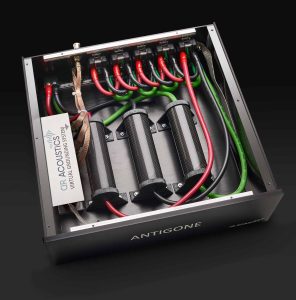
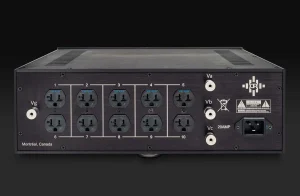
Technically Speaking
 The Antigone is a nice-looking, very well-made piece of equipment. It does not employ an on/off switch, so it should remain on when plugged in. I would describe the Antigone’s looks as “simplistic elegance.” The body is made of black aluminum, weighs about 24 lbs., and measures 17″ x 16″ x 6″ (WDH). The unit I reviewed had a silver anodized aluminum faceplate, which is also available in black. The company logo is located on the lower right-hand corner of the faceplate and appears to be laser engraved. The five (five) rhodium-plated, nano-crystalline duplex receptacles (for ten inputs) reside on the rear of the Antigone’s chassis. Yeah, that’s a mouthful, but trust me, these receptacles are very good and show that Daniel Robidoux, President of DR Acoustics, cares about the quality of parts he uses in his components. These receptacles have a nice, tight feel, even tighter than my Inakustik 3500P, but not overly so. Also of note on the back panel are four signal grounds which make up the Antigone’s “Virtual Ground System.” Robidoux explained that the Virtual Ground is an active ground system and will only work while the unit is plugged in. Looking at the back of the Antigone 3.0, four grounding plugs will accept bananas or bare wire. The three plugs on the right are labeled “Va,” “Vb,” and “Vc,” and there’s one on the left labeled “Vg.” Each ground has been optimized to work specifically for certain operations.
The Antigone is a nice-looking, very well-made piece of equipment. It does not employ an on/off switch, so it should remain on when plugged in. I would describe the Antigone’s looks as “simplistic elegance.” The body is made of black aluminum, weighs about 24 lbs., and measures 17″ x 16″ x 6″ (WDH). The unit I reviewed had a silver anodized aluminum faceplate, which is also available in black. The company logo is located on the lower right-hand corner of the faceplate and appears to be laser engraved. The five (five) rhodium-plated, nano-crystalline duplex receptacles (for ten inputs) reside on the rear of the Antigone’s chassis. Yeah, that’s a mouthful, but trust me, these receptacles are very good and show that Daniel Robidoux, President of DR Acoustics, cares about the quality of parts he uses in his components. These receptacles have a nice, tight feel, even tighter than my Inakustik 3500P, but not overly so. Also of note on the back panel are four signal grounds which make up the Antigone’s “Virtual Ground System.” Robidoux explained that the Virtual Ground is an active ground system and will only work while the unit is plugged in. Looking at the back of the Antigone 3.0, four grounding plugs will accept bananas or bare wire. The three plugs on the right are labeled “Va,” “Vb,” and “Vc,” and there’s one on the left labeled “Vg.” Each ground has been optimized to work specifically for certain operations.
Vg – Absolute Ground – This terminal should be used for the equipment that draws the most current. This typically would be for your amplifier.
Va, Vb, Vc—All provide excellent filtration; however, Va provides the least filtration, and Vc provides the most.
Va – Should be used for analog equipment such as turntables, preamps, tape decks, etc.
Vc – Should be used for digital equipment such as DAC, streamers, or CD players.
Vb – Should be used for all other equipment should you need a 4th connection.
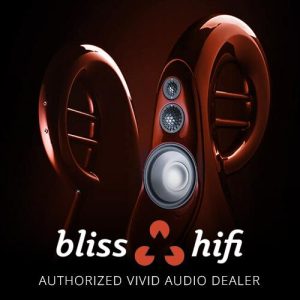 The Virtual Grounding System has capabilities beyond what I looked at and tested. A page in the owner’s manual is dedicated to adequately setting it up and dialing things in for your system. After testing the ground on my turntable, CD player, and amplifier, I can say without hesitation that it works exceptionally well. On the bottom of the unit are three anti-resonance feet upon which the Antigone 3.0 rests. The interior of the Antigone is elegant, clean, and meticulously done. The quality of workmanship is as good as any I’ve seen. The internal cables are cryogenically treated, wired point-to-point, made of 4 AWG ultra-pure copper, and neatly laid out and dressed. The three quartz-filled carbon-fiber filters are the most eye-catching aspect of the Antigone’s internal layout. Robidoux does not use electronic parts in his design, such as capacitors, but utilizes these filters to eliminate the noises, e.g., EMI and RFI, that interfere with our listening enjoyment. The Antigone does this without any current limitations or the sonic artifacts that come with it.
The Virtual Grounding System has capabilities beyond what I looked at and tested. A page in the owner’s manual is dedicated to adequately setting it up and dialing things in for your system. After testing the ground on my turntable, CD player, and amplifier, I can say without hesitation that it works exceptionally well. On the bottom of the unit are three anti-resonance feet upon which the Antigone 3.0 rests. The interior of the Antigone is elegant, clean, and meticulously done. The quality of workmanship is as good as any I’ve seen. The internal cables are cryogenically treated, wired point-to-point, made of 4 AWG ultra-pure copper, and neatly laid out and dressed. The three quartz-filled carbon-fiber filters are the most eye-catching aspect of the Antigone’s internal layout. Robidoux does not use electronic parts in his design, such as capacitors, but utilizes these filters to eliminate the noises, e.g., EMI and RFI, that interfere with our listening enjoyment. The Antigone does this without any current limitations or the sonic artifacts that come with it.
The Antigone also came outfitted with a 20-amp IEC connector.
Sitting on a Symposium Ultra amp stand between my Bully Sound Company mono-amps and my VAC 200 IQs, several visitors asked me, “Which amplifier is that?” The Antigone is solidly built, and every bit of its 24 lbs. It weighed more than, especially after moving it around to various locations in my room. Another thing that Robidoux offers that, in many respects, is pretty cool: he will send you three DR Acoustics power cords to try with your Antigone and decide which one you like the best. Robidoux recommended the Red Fire Supreme power cord for this review, but it’s a “your taste may vary” product type.
How It Sounds
To describe the sonic performance of the Antigone 3.0, the most immediate thing that comes to mind would be that there is more “there” there. All at once, you can hear everything more clearly and distinctly. Every parameter by which you judge the performance of your system will be improved to some degree.  The soundstage becomes more prominent, with sound coming from a wider, deeper, and more defined sound space. Tonal colors that may already sound vibrant sound more so. The separation of the performers on the stage became more defined and had greater specificity. Its capability with system detail and transients is exceptional, and its sense of airiness and ambiance retrieval is palpable.
The soundstage becomes more prominent, with sound coming from a wider, deeper, and more defined sound space. Tonal colors that may already sound vibrant sound more so. The separation of the performers on the stage became more defined and had greater specificity. Its capability with system detail and transients is exceptional, and its sense of airiness and ambiance retrieval is palpable.
Let me discuss some of my more memorable moments while evaluating Antigone 3.0. On the Hadouk Trio’s recording, “Air Hadouk,” the track Soft Landing, Didier Malherbe is playing a woodwind instrument, and 3/4 of the way into it, I was caught off-guard by how clear and distinctly the Antigone allowed me to hear his breathing while he was playing.
 On John Kaizan, Neptune’s group named Take’Dake’ has a wonderfully recorded work titled “Asian Roots,” where most of the group’s instruments are bamboo-based. I enjoy listening to the entire album, in which most of the recordings have a hint of Southeast Asian/Japanese flavor. On tracks like Japanese Roots and Korea Idea the Antigone allowed me to hear the tones and details of bamboo-based instruments with great clarity. On the title track of Fourplay’s recording “Heartfelt,” Nathan East’s bass line, though recorded a little on the heavy side, was nonetheless very rhythmical without sounding bloated or loose. The bass was not only full but was also tight, with my amps plugged into the Antigone. The Lee Ritenour album “Overtime,” a live recording, is made interesting because the venue was small and relaxed enough that the band sits in the middle of the room, surrounded by the audience. The effect of the Antigone on my digital sources and preamp was phenomenal.
On John Kaizan, Neptune’s group named Take’Dake’ has a wonderfully recorded work titled “Asian Roots,” where most of the group’s instruments are bamboo-based. I enjoy listening to the entire album, in which most of the recordings have a hint of Southeast Asian/Japanese flavor. On tracks like Japanese Roots and Korea Idea the Antigone allowed me to hear the tones and details of bamboo-based instruments with great clarity. On the title track of Fourplay’s recording “Heartfelt,” Nathan East’s bass line, though recorded a little on the heavy side, was nonetheless very rhythmical without sounding bloated or loose. The bass was not only full but was also tight, with my amps plugged into the Antigone. The Lee Ritenour album “Overtime,” a live recording, is made interesting because the venue was small and relaxed enough that the band sits in the middle of the room, surrounded by the audience. The effect of the Antigone on my digital sources and preamp was phenomenal.  On the track “Blue In Green,” Lee Ritenour’s guitar, Ernie Watt’s tenor saxophone, and even the audience chatter sounded so real and present in my room that it was uncanny. Another “live recording” I used during this evaluation period was the Joey DeFrancesco recording “Part III,” a live recording featuring the track “Blue In Green.” As with the Ritenour recording, the sound of the audience, the ambient queues, and, this time, the organ filling the room with all its distinct tonal colors were brought to life through Antigone. I returned to Terje Isungset’s recording “Winter Songs” (Icemusic) for room-shaking bass. With the Antigone back to the back end of the system powering my amplifiers and on tracks like Fading Sun and The Dawning, bass was deep, tight, and impactful.
On the track “Blue In Green,” Lee Ritenour’s guitar, Ernie Watt’s tenor saxophone, and even the audience chatter sounded so real and present in my room that it was uncanny. Another “live recording” I used during this evaluation period was the Joey DeFrancesco recording “Part III,” a live recording featuring the track “Blue In Green.” As with the Ritenour recording, the sound of the audience, the ambient queues, and, this time, the organ filling the room with all its distinct tonal colors were brought to life through Antigone. I returned to Terje Isungset’s recording “Winter Songs” (Icemusic) for room-shaking bass. With the Antigone back to the back end of the system powering my amplifiers and on tracks like Fading Sun and The Dawning, bass was deep, tight, and impactful.
A Few More Thoughts
.jpg?KeepThis=true&TB_iframe=true&height=430&width=700) The Antigone performed flawlessly while it was in my system, and taking advantage of its considerable system grounding capabilities, I set it up once. I forgot it was an addition to my system. The Antigone’s five duplex receptacles will allow you to plug your whole system into it unless it is spread around your listening room like mine. In my 25′ x 16′ listening room, my source components and preamp are situated next to the seated position, but my speakers and amplifiers are nearly 15′ or more away. How unfortunate that is, considering the possibility of needing two AC conditioners. Talk about having to take the good with the bad. Some of you guys’ comments about the Antigone were somewhat “enlightening” to a certain extent. Shortly after Dave invited me to spend some time reviewing the Antigone, I read some of what people who had spent time with it and the slightly older conditioner brother, the Polynice, had to say. There were comments like it having a rolled-off, softened top end, possibly due to the darkness of the background soaking up too much of the airiness and highs and possibly softening the bass. The first time I listened to the Antigone 3.0, I proclaimed, “They were right!” before even giving it a serious setup. I wasted nearly a week of listening, wondering what I had gotten myself into. Slowly, things began to take shape, and I began to look at how things were set up in my system regarding tweaks, shelves, platforms, and such. I began to notice that the Antigone could show me where I had things in my system that were detrimental to my musical enjoyment. Once I began to address those setup issues, almost all the things I didn’t like about my system that made it seem unlistenable and that I erroneously attributed to the Antigone were gone. A few more tweaks and adjustments, such as having the Antigone at the front-end of my system or moving it to the back-end of the system, resting it upon my Star Sound Technology platform or a Symposium platform, different types of shelving material, etc., all played major parts in making this one of my more enjoyable reviews. I put the Antigone through its paces and feel I got the full measure of what it does and how it performs. Yes, it does allow music to emanate from a darker background, but that was nowhere close to being at the cost of high-frequency extension, loss of airiness, or softening of the highs. Those sonic attributes became more defined. The Antigone allows the listener to hear more of those things we attribute to music and deeper into the music. During one of my listening sessions with some friends, as we struggled to ascribe a descriptor to what we were hearing, one of my friends commented that it was as though the “atmosphere had more atmosphere.” Yeah, but you would have to have been there to get the full effect of what he was trying to say, and I agreed with him. The Antigone was consistent in its performance in that it performed just as well at the front end of my system as it did at the back end.
The Antigone performed flawlessly while it was in my system, and taking advantage of its considerable system grounding capabilities, I set it up once. I forgot it was an addition to my system. The Antigone’s five duplex receptacles will allow you to plug your whole system into it unless it is spread around your listening room like mine. In my 25′ x 16′ listening room, my source components and preamp are situated next to the seated position, but my speakers and amplifiers are nearly 15′ or more away. How unfortunate that is, considering the possibility of needing two AC conditioners. Talk about having to take the good with the bad. Some of you guys’ comments about the Antigone were somewhat “enlightening” to a certain extent. Shortly after Dave invited me to spend some time reviewing the Antigone, I read some of what people who had spent time with it and the slightly older conditioner brother, the Polynice, had to say. There were comments like it having a rolled-off, softened top end, possibly due to the darkness of the background soaking up too much of the airiness and highs and possibly softening the bass. The first time I listened to the Antigone 3.0, I proclaimed, “They were right!” before even giving it a serious setup. I wasted nearly a week of listening, wondering what I had gotten myself into. Slowly, things began to take shape, and I began to look at how things were set up in my system regarding tweaks, shelves, platforms, and such. I began to notice that the Antigone could show me where I had things in my system that were detrimental to my musical enjoyment. Once I began to address those setup issues, almost all the things I didn’t like about my system that made it seem unlistenable and that I erroneously attributed to the Antigone were gone. A few more tweaks and adjustments, such as having the Antigone at the front-end of my system or moving it to the back-end of the system, resting it upon my Star Sound Technology platform or a Symposium platform, different types of shelving material, etc., all played major parts in making this one of my more enjoyable reviews. I put the Antigone through its paces and feel I got the full measure of what it does and how it performs. Yes, it does allow music to emanate from a darker background, but that was nowhere close to being at the cost of high-frequency extension, loss of airiness, or softening of the highs. Those sonic attributes became more defined. The Antigone allows the listener to hear more of those things we attribute to music and deeper into the music. During one of my listening sessions with some friends, as we struggled to ascribe a descriptor to what we were hearing, one of my friends commented that it was as though the “atmosphere had more atmosphere.” Yeah, but you would have to have been there to get the full effect of what he was trying to say, and I agreed with him. The Antigone was consistent in its performance in that it performed just as well at the front end of my system as it did at the back end.
It did well with all types of music, whether chamber music, solo piano, spoken word, all the way to large-scale orchestral works, bass-pounding euro-electro pop, house music, and everything else. However, it was even more dramatic when it was used in conjunction with my Inakustik 3500P conditioner. I hadn’t heard anything close to performing as well sonically as my Inaskustik, though; please keep in mind that I have yet to hear a lot of other AC conditioners, especially the more popular ones. Inakustik and Antigone have different operating philosophies for achieving a high level of power conditioning. The Inakustik uses a high-level performance parallel filter. At the same time, the Antigone has these beautiful-looking filters with Daniel Robidoux’s fine, scientific (and patented) mixture of quartz and other essentials that, no matter what anyone says or concludes, work at a high level. Whatever you Inakustik owners do, do not compare the inside of an Inakustik to the inside of an Antigone. If you put a Plexiglass top on the Antigone, you’ll proudly leave it on to show it off.
It is worthy of “showing off” for the build quality alone. If you put a clear top on top of the Inakustik, you’ll wonder where the rest of it is. The scarcity of internal parts doesn’t determine how well it performs or sounds, but gee whiz. The Antigone is about $3K more than the Inakustik, so you’re getting more for your money. Regarding the performance of these two excellent AC conditioners, I couldn’t choose one based on sonics. I already own an Inakustik, and the Antigone doesn’t perform much better than it does, so I would want to go out and get one, especially at its price point.
 But one needs to remember that you’re getting room for ten inputs instead of only six, and for some of you, that’s huge. Then there’s the Antigone’s Virtual Grounding capabilities that can’t be overlooked. Whatever you hear or read about Antigone’s grounding capabilities, it’s not just white paper speak; it’s terrific. My ancient Merril Heirloom turntable has a ground cable that’s functional at best. It works, but it’s not suitable for being on a turntable. During the review period, with the Antigone located near my sources, I took one of the supplied grounding cables, loosened up a banana plug, wrapped Merrill’s ground wire around it, and plugged it into the Va ground input on the back of the Antigone. Almost immediately, I noticed a change. Before I started spinning my first album, not only did the sound of my phonostage get eerily quiet, but I also felt like the jet-black background you’d expect from listening to a CD. I initially thought something was wrong. I checked all my connections and found I could turn the volume up on my preamp, but I got dead silence. When I started playing music, I realized the genius and accomplishment of what Robidoux was trying to achieve with his “active ground” technology. My Merril ground and power cord plugged into the Antigone was like a surge of life in my venerable old turntable. The quieter background led to more detail, frequency extension, and better transient response. Quite a few of my friends have asked me how I felt about Antigone, and I would tell them I love it.
But one needs to remember that you’re getting room for ten inputs instead of only six, and for some of you, that’s huge. Then there’s the Antigone’s Virtual Grounding capabilities that can’t be overlooked. Whatever you hear or read about Antigone’s grounding capabilities, it’s not just white paper speak; it’s terrific. My ancient Merril Heirloom turntable has a ground cable that’s functional at best. It works, but it’s not suitable for being on a turntable. During the review period, with the Antigone located near my sources, I took one of the supplied grounding cables, loosened up a banana plug, wrapped Merrill’s ground wire around it, and plugged it into the Va ground input on the back of the Antigone. Almost immediately, I noticed a change. Before I started spinning my first album, not only did the sound of my phonostage get eerily quiet, but I also felt like the jet-black background you’d expect from listening to a CD. I initially thought something was wrong. I checked all my connections and found I could turn the volume up on my preamp, but I got dead silence. When I started playing music, I realized the genius and accomplishment of what Robidoux was trying to achieve with his “active ground” technology. My Merril ground and power cord plugged into the Antigone was like a surge of life in my venerable old turntable. The quieter background led to more detail, frequency extension, and better transient response. Quite a few of my friends have asked me how I felt about Antigone, and I would tell them I love it.
I would not feel compelled to get one if I already owned a conditioner that performed as well as the Inakustik, but if I were starting from scratch and could afford an Antigone, I would surely want one. If all things were equal, and I could have either the Antigone or the Inakustik, I would choose the Antigone for the extra receptacles and Virtual Grounding System, not to mention the fact that it sounds exceptionally good and took the performance of all the parts of my system to a higher level. This includes my two VAC 200 iQ stereo amps, which I can run in mono and my BSC 100-watt mono amps. Taken on its own, the Antigone 3.0 is absolutely a stellar performer and worthy of your consideration. Also, the more I looked at some of the other conditioners and their retail costs, I came to realize that the Antigone is priced competitively with some of the other high-end conditioners out there, such as those trendy offerings from Shunyata and PS Audio, and quite a bit less than others like the Telos QRC and the Sound Application TT-7. If you’re looking for a conditioner that offers next-level sonic performance, with plenty of receptacles and an impressive active-grounding system, the Antigone 3.0 is one of the better sounding, looking, and performing units available. Highly recommended.


Additional thoughts from Dave Thomas:
 When I learned that there was, in fact, an Antigone 3.0, and even more exciting, that the new device now includes the ability to ground your entire system actively, I just had to check it out for myself.
When I learned that there was, in fact, an Antigone 3.0, and even more exciting, that the new device now includes the ability to ground your entire system actively, I just had to check it out for myself.
In 2022, I reviewed a line of DR Acoustics cables specifically made for Classe’ Audio components, which I own (reviewed here). DR’s Daniel Robidoux was kind enough to send the Antigone 2.0 Power Management System along with the cables. I was so impressed that I named it one of my “Most Wanted Components” that year. More recently, DR Acoustics released the Polynice Power Management System/Virtual Ground System as its first product to combine power conditioning with ground management. That prompted upgrading the Antigone 2.0 to include ground management, hence the 3.0 status.
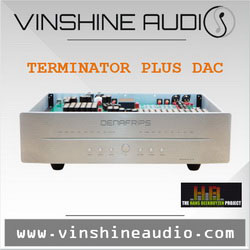 The 3.0 still has the same electromagnetic filtration system as the 2.0, but the 3.0 excels at everything the 2.0 did – due to the grounding – which means a blacker soundstage and improved signal-to-noise ratio, which is essential to those of us with vinyl-based systems. Imaging within the soundstage is also more precise and detailed. The Ground System is designed to manage noise and upper-frequency distortion for digital setups, especially in the “human hearing” frequency range. Each ground post has a different filtration level. The Antigone’s internal wiring is cryogenically treated and assembled by hand, point-to-point, setting a new standard for power management systems.
The 3.0 still has the same electromagnetic filtration system as the 2.0, but the 3.0 excels at everything the 2.0 did – due to the grounding – which means a blacker soundstage and improved signal-to-noise ratio, which is essential to those of us with vinyl-based systems. Imaging within the soundstage is also more precise and detailed. The Ground System is designed to manage noise and upper-frequency distortion for digital setups, especially in the “human hearing” frequency range. Each ground post has a different filtration level. The Antigone’s internal wiring is cryogenically treated and assembled by hand, point-to-point, setting a new standard for power management systems.
The Antigone 3.0 comes with a set of copper ground wires, which is standard. It can accommodate up to 16 ground cables, enough for an extensive setup. Robidoux recommends three (3) different power cords that Robidoux believes have different sound characteristics (and price points) to choose from:
- The Pegasus Extreme (Full-bodied sound, Bold). $5,495
- The Red Fire Supreme (Detailed, precise, profound soundstage). $6,495
- The Red Fire Ultra (Falls between the Extreme and Supreme). $3,295
The cable I was sent was the Red Fire Supreme.
Sonically, the impact that the Antigone 3.0 made on my system was most evident on one of my favorite tracks, a live recording of Mike Hampton’s brilliant performance of the virtuoso classic “Maggot Brain,” from the Funkadelic album, One Nation Under a Groove [Warner Brothers]. Not only does the Antigone help place you in the middle row center in the venue, but at the 3:31 point of the recording, someone whistles from the stage, and it’s as if the sound travels across the theater. Another track that benefits from the artifact-free impact of the 3.0 is Deborah Henson-Conant’s “And He Kissed Me…” from the album Talking Hands [GRP]. This wonderful track is a conversation over drinks between an American woman and a French man with Henson-Conant’s splendid jazz harp as a backdrop. With such a quiet soundstage, you can hear everything from the deep, seductive tone of the man’s voice to Henson-Conant’s lip-licking nervous excitement, not to mention the sounds of wine being poured and a cigarette being lit. If you’re a fan of subtlety, nuance, and intimacy in a recording, you will love what the Antigone 3.0 can do for your system. Cheers!


Address:
DR Acoustics
244 Sherbrooke est Suite 311
Montreal. Qc
Canada
H2X 1E1
Phone: (514) 961-5303
Email: Drobidoux@dracoustics.com
Website: www.dracoustics.com
DR Acoustics Antigone 3.0 Power Management System/Virtual Ground System – $6,495.00
Mike Wright’s Associated Equipment:
Speakers
Tekton Design Moabs
Amplifier
VAC Signature 200 iQ Amplifiers (used as stereo and monoamps)
BSC Audio BSC100m 100-Watt Mono-amps
Preamplifier
VAC Renaissance Mk V with Phono
Analog
Merrill Heirloom Turntable
Rowland Research Consonance Tonearm
Transfiguration Phoenix Cartridge
Digital
Asus Laptop w/Fidelizer Pro, Roon, and JRiver v.26 for Hi-Res Files
Holo May Kitsune III DAC
Bricasti M5
Marantz SA-7S1 CD Player
Cables
Dynamic Design Heritage Balanced Interconnect
Dynamic Design PAAPI
Silversmith Fidelium Speaker Cable
Pink Faun – USB
Pink Faun – RCA
AnnaLyric Power Cords
Essential Sound Product Essence II Power Cords
Power Line Conditioner
Inakustik 3500P (Distributor loan)
Essential Sound Products Essence Power Distributor
Accessories
Star Sound Apprentice & Rhythm Platforms – for amps
Star Sound Sistrum Rhythm Two Platform Stand
Symposium Acoustics Ultra Platform
Symposium Acoustics HDSE Rollerblocks
Symposium Acoustics +2 Rollerblocks
Adona GX4 Equipment Stand
Epiphany Stand Systems – Celeste Reference Stand
Stereo Times Masthead
Publisher/Founder
Clement Perry
Editor
Dave Thomas
Senior Editors
Frank Alles, Mike Girardi, Russell Lichter, Terry London, Moreno Mitchell, Paul Szabady, Bill Wells, Mike Wright, and Stephen Yan,
Current Contributors
David Abramson, Tim Barrall, Dave Allison, Ron Cook, Lewis Dardick, John Hoffman, Dan Secula, Don Shaulis, Greg Simmons, Eric Teh, Greg Voth, Richard Willie, Ed Van Winkle, Rob Dockery, Richard Doran, and Daveed Turek
Site Management Clement Perry
Ad Designer: Martin Perry


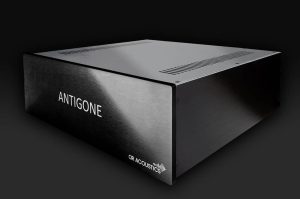




Be the first to comment on: DR Acoustics Antigone 3.0 Power Management System/Virtual Ground System by Mike Wright